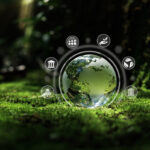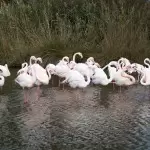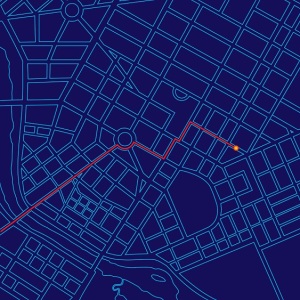
Geomatics or geospatial technology as it is more commonly known, is such a multidisciplinary tool that there are now advanced degrees in specific subjects such as GIS. Most students will come at it from some of these core disciplines: archaeology (especially those who have taken degrees and projects concerned with landscape studies), geology, geography and even statistics (GIS projects will involve some degree of knowledge of mathematics). Typically take at Master's Degree level, it offers an unprecedented analysis of the landscape, allowing far more functionality than the cartographers of the past were permitted.
Geospatial technology such as GIS has many useful applications for town planners, conservationists, the environmental sciences and even healthcare. We have covered some of these in the past and included some examples of technical and research uses without covering much in the way of practical application for most people (even though everybody benefits from the use of the data research). These are all professional uses, but geospatial technologies do have a fun side and practical uses for everybody - and you're probably using it and contributing to it every day (1). Some of your use may inadvertently be contributing to a better understanding of our urban and rural landscapes, and maybe even to environmental research.
Learn more about geospatial degrees.
GPS - Global Positioning System
Satellite Navigation
Today, our smartphones are fitted with GPS technology and satellite navigation units for our vehicles sell in the millions every year (1). Love them or hate them, we rely on satellite imagery and digital mapping to get us where we want to go. This data is often freely available; every time a new link road is built, a new housing development or shopping centre is constructed, a road closes or diverts, your data files will need to be updated. Every time you connect to the satellite network and ask them to plot you a route, your SatNav will update and you'll have up to the moment data to plan it.
The records are kept up to date by national government agencies (2) for many reasons and it is this data - used by our SatNavs - that form the core of other uses such as health planning, disaster relief and urban and rural management. What satellite navigation devices are effectively, are GPS devices used by hikers and runners who like to map where they are going and where they are; runners especially are concerned with improving their personal bests and split times - it's all about the numbers. Popular mobile apps such as Map My Run and Endomondo, and sport tracking devices such as Garmins use GPS technology. They have even become a big part of formal sport to track players positioning and to determine tactics. This way, coaches can see where the weak links are and how they can better organise their teams (3). The manner in which they work today means that we can track not only longitude and latitude to the accuracy of under a metre, but also the speed at which movements are made (4).
Geocaching
One of the fastest-growing hobbies of the last few years, involved enjoyment of the great outdoors - combining a love of being outside and the freely available geospatial technology, is geocaching. People who enjoy hiking do not always have a destination or a goal in mind; orienteering is another form of walking for pleasure but that often involves looking at maps and finding your way around. Geocaching involves finding one of many geocache sites on the internet (usually denoted by a set of co-ordinates) and then going out to find them (5).The geocache will be a waterproof container (such as a plastic box or an old ammunition container) with a notebook and pen so the finder can write their details in the box. Some may contain small items to trade that are of little financial value. You typically do not need much in the way of equipment and your GPS locator (if you choose to use one) will most likely be the most expensive piece of equipment you own (6). Effectively, it is hiking with a planned stop off points for a treasure hunt on the way.
Geo-Tagging
Social media today is big business. Initially a communication network for students, to the cynical it is a way of obtaining people's personal data for free, and selling it on to businesses in your area for greater targeted advertising (location based services). There may be something in that, and the ability to now geotag your photos and videos and check in to Facebook Places for example, has certainly added weight to those who think it is there purely for that reason (8). However, the large number of geotagged photos available on social media and on dedicated sites that people use to build a picture of the world around us can help plot long hiking trips, such as across The Alps, for the best route in bad weather or to avoid land slips or other changes in the topography (7). Undoubtedly, the tools used to tag our photos and videos in real-time on Facebook, Flickr, FourSquare and others, certainly have been used by researchers for a variety of geographical reasons (9 p2). These do have real-world implications for targeted advertising; even more useful to everybody is that security services and emergency planning groups can use up to the minute images uploaded from the scene to pinpoint exactly where they need to be and focus their efforts (11, p3-4).
Despite concerns about safety and security (10), especially now that most social media on our phones come with geotagging automatically enabled (9, p5-6) most people have embraced this technology to the full. Geotagging is integral to the biggest GIS/Geospatial internet project of the last few years. Used by businesses, researchers and the curious armchair traveller alike, everybody remembers the first time they used Google Earth.
Online Map Projects
The amalgamation of many different types of geospatial data used as a leisure tool and a research tool, for photographs, for travel, for plotting journeys, for looking all over the world from the comfort of your own computer chair, is Google Earth. Yet it is not the first tool of its kind. www.openstreetmap.org has been around longer than its more famous cousin has been around. OpenStreetMap uses GPS traces (12, 324 & 483) to map the entire globe. It is freely available to anybody with web access; built by volunteers from all walks of life including GIS professionals, cartographers, engineers and so many other, it utilizes GPS data to record features on the ground, GIS for location and analysis, and aerial photographs to make up the record (13). OnoMap.org uses different data types - planning and plotting ethnic and cultural data (12, p325) though it is used largely for academic research into etymology and cultural studies (14).
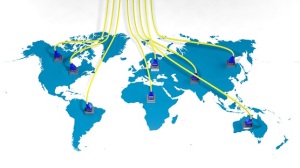 Google Earth is arguably the biggest online mapping project presently available. It was born out of a much older tool EarthViewer 3D produced by Keyhole (15). Like some of the projects above, it uses data from GIS, GPS and aerial photography and imposes them onto a 3D globe. It has provided masses of data for research purposes (16), shown environmental issues on a much wider scale and far more accessibly than the scientific community has managed to do so far. It is also a fun tool that people use to plot walking routes, to see their houses and to look for interesting features in their home town or on the other side of the world. The interactive communal nature of Google Earth means you may load your own photos to the tool and help others in the community to find their way around. You may add restaurant reviews. When used in conjunction with inexpensive commercial software, walking groups may plot long hiking routes and for building geographic databases (17).
Google Earth is arguably the biggest online mapping project presently available. It was born out of a much older tool EarthViewer 3D produced by Keyhole (15). Like some of the projects above, it uses data from GIS, GPS and aerial photography and imposes them onto a 3D globe. It has provided masses of data for research purposes (16), shown environmental issues on a much wider scale and far more accessibly than the scientific community has managed to do so far. It is also a fun tool that people use to plot walking routes, to see their houses and to look for interesting features in their home town or on the other side of the world. The interactive communal nature of Google Earth means you may load your own photos to the tool and help others in the community to find their way around. You may add restaurant reviews. When used in conjunction with inexpensive commercial software, walking groups may plot long hiking routes and for building geographic databases (17).
Summary
The commercial, academic and even personal use of these powerful online mapping tools are limitless. They make our lives easier and they can have fun and useful applications too. Geospatial Technology such as GIS and GPS are integral to our everyday lives. They are suitable and for authorities to organise and plan highly complex human systems such as resource planning and traffic management for our cities, conservation for our protected areas and to locate and map deposits of gas, oil and gold etc. As you can see, people can use these technologist purely for fun as part of their everyday leisure activities and have even in some cases, created new forms of entertainment thanks to this technology of the digital age.
Online mapping is one of the big data sets that businesses pursue in order to better market to you and target relevant services depending on, not just your typical profile details, but also your location. Where you live is important in many ways, not just the city where you live but also where you live in that city (your affluence for example).
Learn more about how to become a geospatial analyst.
Sources
- http://geography.about.com/od/geographictechnology/a/Gis-Today.htm
- http://catalog.data.gov/dataset
- http://www.sciencedirect.com/science/article/pii/S1440244009001844
- http://geography.about.com/od/geographictechnology/a/gps.htm
- http://www.ukgeocachers.co.uk/what-is-geocaching/how-does-a-gps-work.html
- http://www.ukgeocachers.co.uk/what-is-geocaching/what-equipment-do-i-need.html
- https://www.aaai.org/ocs/index.php/FLAIRS/FLAIRS11/paper/viewFile/2617/3058
- https://www.usenix.org/legacy/events/hotsec10/tech/full_papers/Friedland.pdf
- http://www.army.mil/article/75165/Geotagging_poses_security_risks
- http://data.openduck.com/wp-posts/2010/07/paper-geotagging/valli-hannay-geotagging.pdf
- Longley, P.A., Goodchild, M.F., Maguire, D.J. & Rhind D.W. 2011: Geographic Information Systems & Science (Third Edition). Wiley: Hoboken, New Jersey
- http://www.openstreetmap.org/about
- http://www.slideshare.net/adnanned/icsin-pres
- http://serc.carleton.edu/sp/library/google_earth/what.html
- https://wpo.noaa.gov/Programs/EPIC
- http://www.techrepublic.com/blog/five-apps/five-utilities-for-a-better-google-earth/
- Guide to Parasitology - November 19, 2018
- Deserts as Ecosystems and Why They Need Protecting - November 19, 2018
- Conservation: History and Future - September 14, 2018
Related Articles
Featured Article
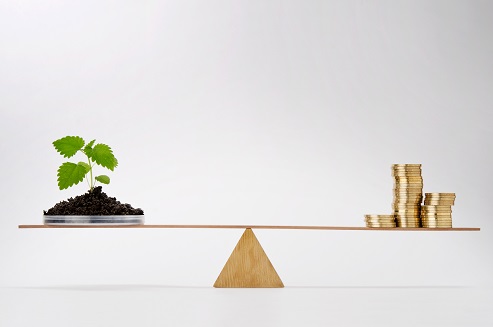
Introduction to Environmental Finance




